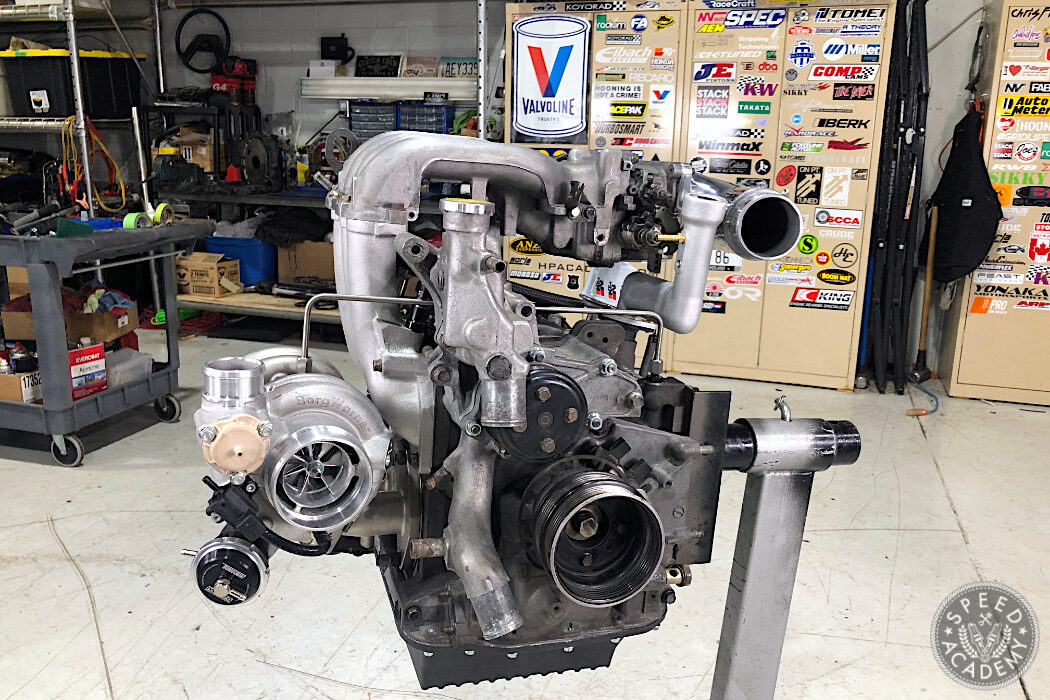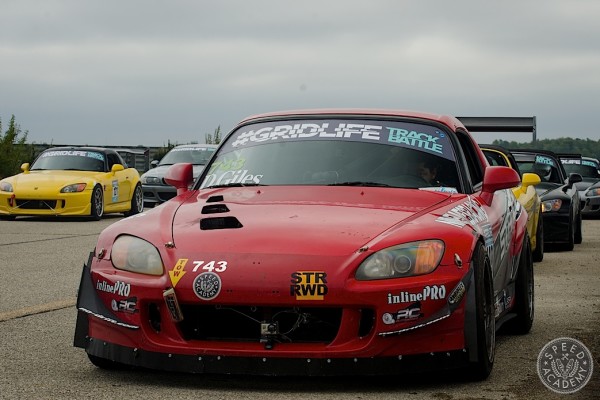In Part 4 of our 4 part rotary engine build series sponsored by Valvoline, which you can watch at the bottom of this post, Pete and I build out the longblock, the shortblock assembly having been finished by our rotary engine building guru Joe Ferguson from RPM Motorsports in Part 3 of the series.
We got things started by bolting up a SPEC Clutch Stage 2+ clutch disc and pressure plate, and we’ve had a lot of prior experience with the 2+ friction material, which uses Kevlar on one side for excellent street manners and a carbon semi-metallic material on the other side for increased torque capacity. In our experience, this clutch can take a ton of abuse at the track while still delivering easy engagement from a stop for street driving, and with a torque rating of 425 lb/ft it should be more than strong enough to handle the power we’re expecting from our 13B. Oh, and we also installed a SPEC lightweight aluminum flywheel, which weighs about half of the 20-lb OE flywheel, so will deliver snappier throttle response and quicker heel & toe rev-matching action.
Next we jumped to the intake side of the engine, bolting up an Xcessive Manufacturing lower intake manifold, which deletes a bunch of “rats nest” doodads including the ACV pump and EGR tube. This frees up a bunch of space to redesign the manifold for much better airflow, which should pay some serious dividends on our high compression, high revving 13B-REW setup.
Next we installed Radium Engineering’s beautifully made billet aluminum primary and secondary fuel rails, which have phenolic spacers and washers to prevent the rails (and thus the fuel) from absorbing heat directly from the engine. Plus we ordered up their ingenious ORB swivel banjo AN fittings so that we can route the fuel lines in any orientation we want.
Over on the exhaust side of the engine, we started off by installing Turblown Engineering‘s investment cast 347SS exhaust manifold, which is designed specifically to be paired with a Borg Warner internally wastegated EFR turbocharger. We opted for an EFR 7670, which is a smaller turbo than a lot of rotary guys would start with, but we’re targeting response rather than peak power and we think this setup will deliver the kind of super-quick transient response we’re after.
Thanks to feedback from Elliot at Turblown Engineering, we also upgraded the wastegate actuator to a Turbosmart GenV Twin Port Internal Wastegate Actuator that’s been specifically designed to suit EFR Series Turbochargers. This award-winning actuator improves boost response and control thanks to the larger working surface are of its diaphragm, plus its locking collar system means we can quickly and easily change out the base spring from 5psi all the way up to 26psi, and it’s true twin port control means we’ve got a wider boost control window, too.
That is a wrap on this engine build series, and we have to say a very big thank you to Valvoline for their support on this and for giving us the creative freedom to try something a little different with our “Original Motor Oil Moments” Sports Desk style promos in each episode.
We hope you enjoyed seeing this truly unique engine come together, and we encourage you to give Valvoline a try next time you’re looking for a high quality engine oil for your special project or your daily driver. We’ve been using Valvoline’s full line of products for many years now and have found everything they make to be extremely high quality, as evidenced by our Scion FR-S’s supercharged FA20 engine surviving (and winning) the Ontario-1500 week-long race event with Valvoline VR1 racing oil in its sump and Valvoline SynPower Full Synthetic gear oil in the transmission.

